Last year, The Australian revealed that drop-out rates for first year university students had hit an all-time high one-in-five, with the Grattan Institute’s higher education policy expert, Andrew Norton, claiming there was a correlation between drop-out rates and increasing enrollments, particularly among low-Australian Tertiary Admission Rank (ATAR) students.
Then in June, the Higher Education Standards Panel released a discussion paper, which has found that 56% of students commencing bachelor degrees were admitted based on criteria other than their ATAR in 2015 – the highest proportion in a decade – and that average ATAR entrance scores have fallen considerably:
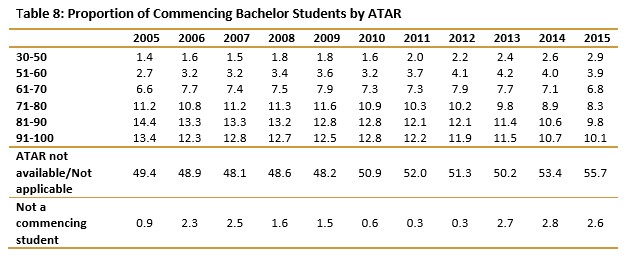
The report also found “that the likelihood of withdrawing from study is generally correlated with ATAR (see Figure 7)”:
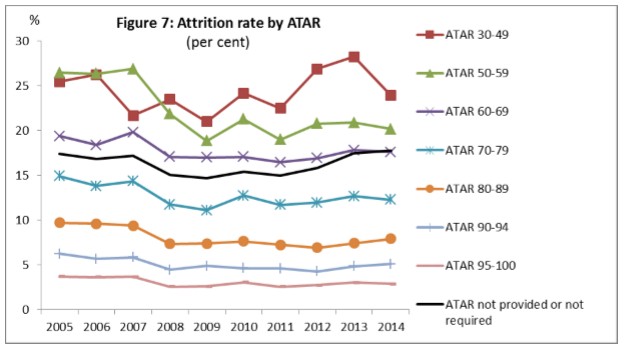
Today, The AFR reports that university drop-out rates remain stubbornly high, especially among second tier universities:
Nationally 14.97 per cent of uni students dropped out after just one year in 2015, according to data published on Wednesday. This compares to 15 per cent in 2014 and it’s barely budged since the 14.86 per cent recorded for 2005…
While some big-city campuses have managed to cut their attrition rate, smaller and regional universities have seen a sharp increase in drop outs.
Swinburne University of Technology in suburban Melbourne hit an attrition rate of 23.6 per cent in 2015, up from 14.67 per cent in 2005. And Curtin University of Technology in Western Australia jumped from 14.31 per cent in 2005 to 16.34 per cent in 2015…
Education Minister Simon Birmingham says too many students don’t get the support they need to succeed.
“We should ask universities to account for their performance and get them to take steps to improve the results they achieve and be accountable for the record levels of funding they’re receiving,” he said…
The Grattan Institute’s higher education program director Andrew Norton says too many students admitted to university lack the capacity to succeed.
This is part of the boom in university enrolments since 2009, when the financing model was switched to one driven by demand.
“Some universities have had to lower thresholds for admission, particularly regional unis that might take more mature age students,” Mr Norton said. “So now they have a more risky student profile.”
Seriously, what did we expect?
The whole model is set-up so that it rewards universities for enrolling as many students as possible, since they get paid for each student enrolled, irrespective of whether the student is capable or completes the course, or can get a job in the field of study. The student then owes the government the amount of the loan, but they only have to repay it when their income reaches a certain threshold. And since many never reach that level of income, they never pay, so the taxpayer foots the bill instead.
This is why tertiary entrance scores have fallen to appallingly low levels, as shown above.
It is why we have seen a rapid escalation of students undertaking bachelor degrees:
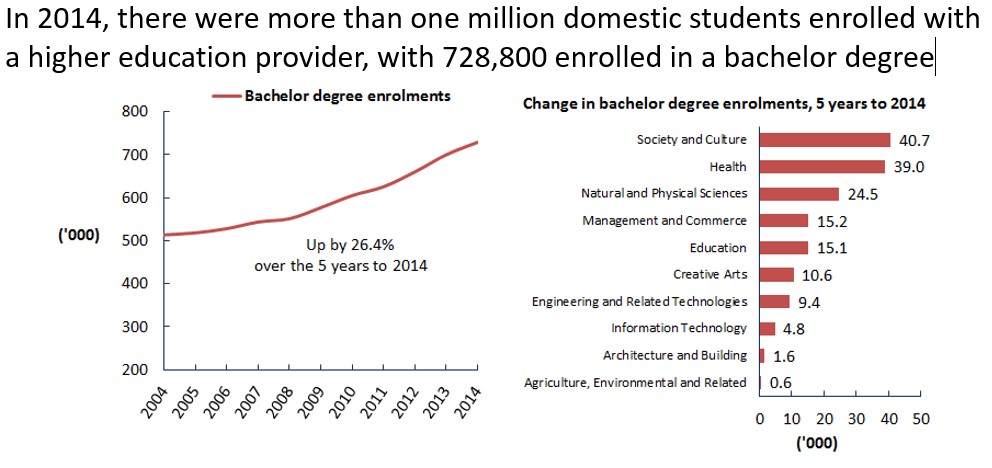
Despite worsening job prospects:
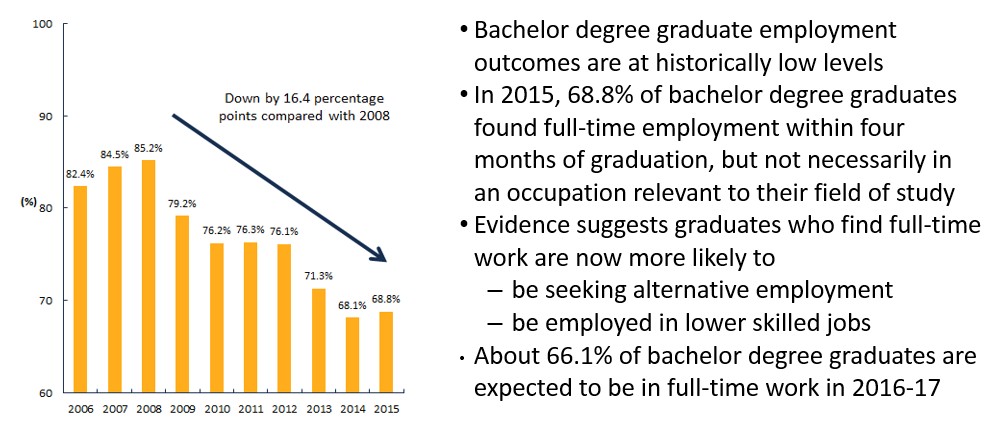
And it is why we have seen total outstanding HELP debt escalate rapidly, placing increasing strain on the Budget since much of it won’t be repaid:
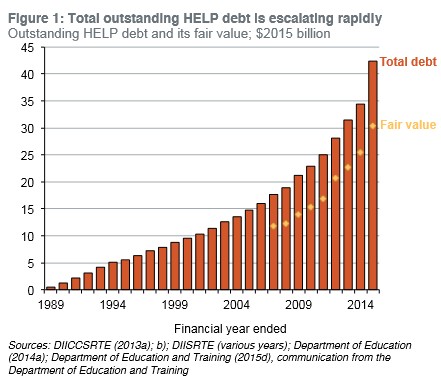
The sad truth is that Australia’s universities have morphed from educational institutions providing a public good into quantity-based degree factories, whereby they teach as many students as possible to accumulate Commonwealth government funding through HELP/HECS debts. Quality of teaching, and students’ ability to secure subsequent employment, remain distant priorities.
What is tertiary education actually for and who does it benefit? Is it a public good used to boost the nation’s productivity and prosperity, or is it merely another commodity to be sold for short-term profit?

